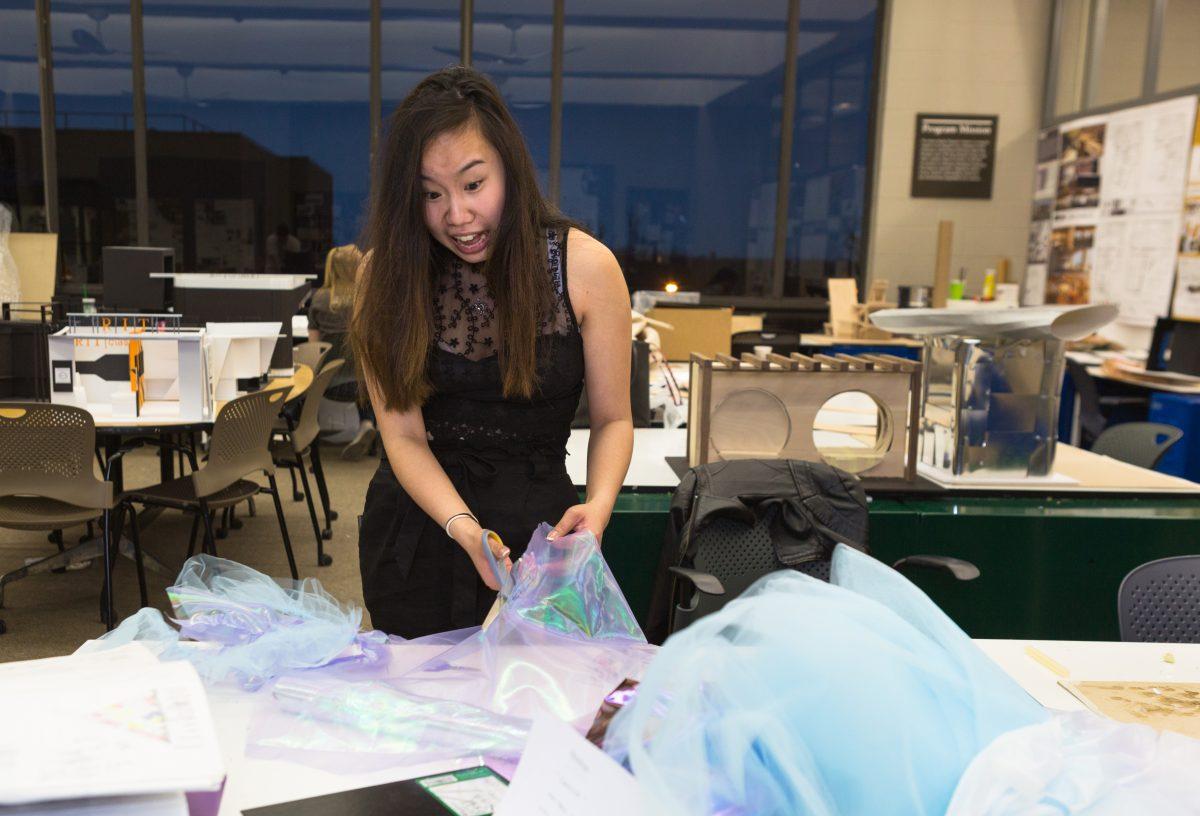There are many ways to get around campus, but which is the best? Every way has its pros and cons, so it’s up to the individual to decide what their best course of action is. Maybe you prefer longboarding, perhaps you’d rather bike or maybe you’re one for a simple stroll. As long as you’re getting where you need to go on time, that’s what really matters.
“As long as you’re getting where you need to go on time, that’s what really matters.”
Walking
Humans are bipedal — we’re made to walk. Walking is the most common form of on-campus transportation, and doing so gives you time to socialize, admire the scenery and check your phone — just be sure to watch where you’re going. For the explorers, there are routes through buildings or our elaborate system of underground tunnels that can shorten your travel time and protect you from the elements. Walking is a great way to traverse Brick City.
The minimum amount of time between classes should be 10 minutes, and that’s almost always enough time to get to where you need to go, assuming you don’t need to do anything else in between. That being said, walking is not the fastest way to get around. If you’re in a hurry and running late, it may not be the best option.
As the quarter mile gets crowded, it might be tempting to take a stroll on the bike path to mix things up and enjoy some solitude. However, it’s best to avoid doing this as those paths are for cyclists, not pedestrians.
Pedestrian paths cross non-pedestrian paths at some locations on campus. Where the bike path crosses the quarter mile in front of dorms and at Gleason Circle, it is wise to watch out for students on wheels. Pedestrians have the right of way but should look out for themselves. This means taking an occasional glance up from their phone.
Pedestrians should stay off the bike path for the portion behind the health center, as it’s already narrow enough for just two lanes of bikes, and the blind corner can cause some traffic issues if a pedestrian is in the way of a cyclist.
Bicycling
Cycling is certainly the fastest way to get around. A 20-minute walk from dorms to the far end of academic side can be shortened to as little as three minutes for the strong-legged. The time saved from biking can be used in many ways, which is part of the appeal.
Bike racks are everywhere; RIT is an extremely bike-friendly campus. U-locks are most recommended, as cable locks are easy for thieves to cut.
Should your bike break or need a minor repair, there are many places around Rochester that can help. RIT has its own bike repair shop where bicycles can be repaired, albeit for a fee. The shop is located underneath Monroe Hall in the tunnels, and is open from 5 p.m. until 9 p.m. on Tuesdays and Thursdays. There are also bike repair stations outside of Grace Watson Hall and between Golisano Hall and Orange hall that can be used for simple repairs.
Biking comes with quite a few negatives, though. Some of these can be avoided, others cannot.
Without fenders to cover the wheels, for example, frequently riding on wet ground will produce a wet lower back. Additionally, there aren’t many indoor places to store a bike, so they must withstand the elements. This might mean sitting on a wet or snowy seat (however, one way to avoid a wet bottom is to cover the seat with a plastic bag). In addition, bike paths might get covered in snow during the winter months, and the raging winds could prove a challenge to pedal through.
Where the bike path crosses the quarter mile near dorm side, it swings down towards the woods and behind the health center. This area is especially dangerous on all forms of wheeled transportation, especially when it’s wet.
Whether it’s hot out or cold, cycling is likely to produce sweat. While a cyclist might be able to leave late and arrive early, they might show up with a muddy backpack, wet butt or a sweaty back.
Bikes are prohibited on the quarter mile on weekdays between 7 a.m. and 7 p.m. The quarter mile is too busy, and even the most careful and skilled cyclist is bound to make some pedestrians feel unsafe. Pedestrians don’t move in predictable ways, and there are accidents every year.
Boarding
Like bikes, boards can drastically reduce commute times. Hopping on a board could often mean the difference between arriving to class on time or getting there late. Additionally, boards are much smaller than bikes. This means they have a guaranteed spot in your dorm room, but struggle harder than a bike to find a spot outside of class.
Though some people have managed to lock up their board and scooters the same way as a bike, most carry them into class. This is fine, but it can be a hassle.
Like bicyclists, anyone on wheels should stay off the quarter mile during peak times. According to Public Safety, non-pedestrians are not required to wear helmets, but it’s recommended.
There isn’t a concrete speed limit. Instead, the speed limit is whatever speed a non-pedestrian can demonstrate control at. This means that if a rider can’t stop or has to swerve to avoid a pedestrian, they are going too fast.
The ground can be bumpy. Boards with smaller wheels, roller blades and Heelys are the least popular choice for a good reason. The riding is uncomfortable and small bumps in the road can cause a small wheel to come to a complete stop, which is unsafe.
And yes, electric longboards are permitted, but not hoverboards.
Tigers are encouraged to transport themselves as they wish, be it bikes, boards, stilts or feet, as long as they respect and care for the safety of others.




